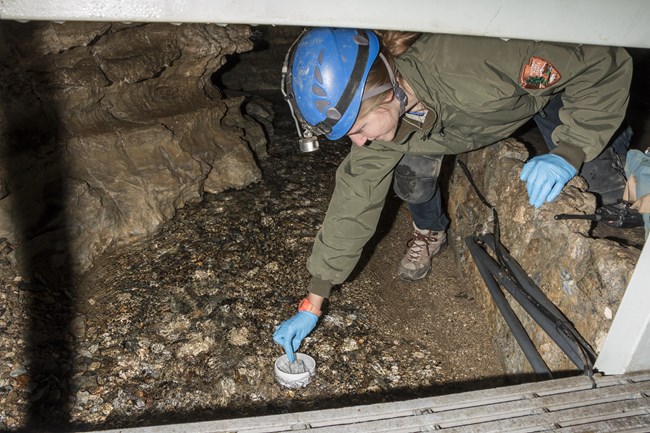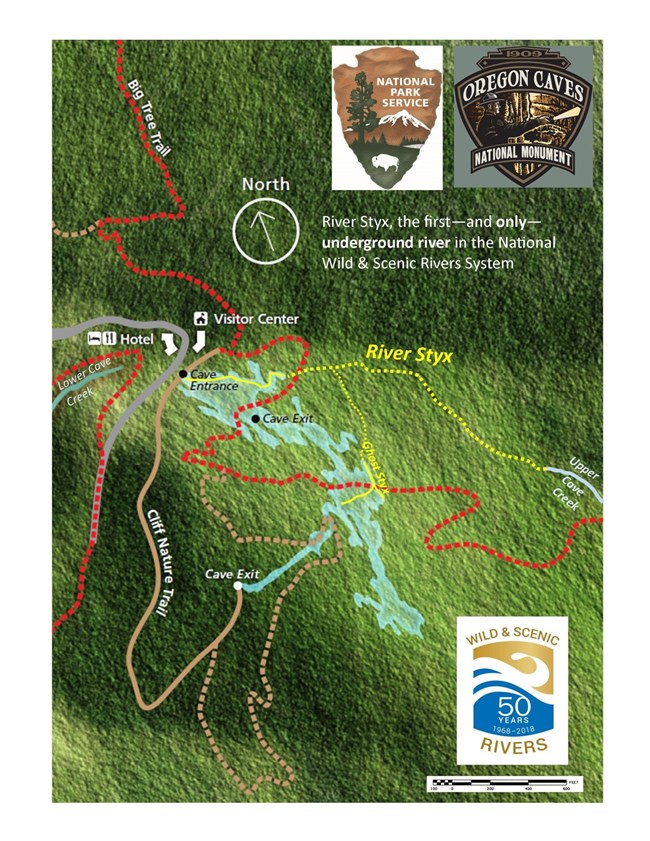
CELEBRATING 50 OUTSTANDINGLY REMARKABLE YEARS!Over 50 years ago, America’s free-flowing streams were being dammed and altered at an alarming rate. At the urging of fishermen and conservationists, wise leaders in congress created a system to protect some of the remaining natural rivers. The passage of the Wild and Scenic Rivers Act of 1968 created the National Wild and Scenic River System. OREGON - A Wild & Scenic StateThere are 58 National Wild & Scenic River Designations in Oregon, more than any other state. Oregon has approximately 110,994 miles of river, of which 1,916.7 miles are designated as wild & scenic—almost 2% of the state's river miles. 
NPS THE RIVER STYX - Wild and Scenic Goes UndergroundOregon Caves is celebrating the 50th anniversary of the Wild and Scenic Rivers Act by highlighting our own River Styx, which in 2014 became the first totally underground stream to be added to the Wild and Scenic Rivers System. The Congressionally-designated National Wild and Scenic River Styx begins high above the main cave entrance, where the headwaters of Cave Creek are pirated underground. Once inside the marble bedrock, the stream takes on the name River Styx. One hundred and nine years ago, when President Taft created Oregon Caves National Monument, caves were considered separate from the surface environment. Much of the marble block that supports the cave as well as the headwaters of Cave Creek that feed the River Styx were not part of the original monument. 
NPS/ Neil Elfrink The Outstandingly Remarkable Journey of the River Styx, Oregon Caves National Monument and Preserve.High above the main cave entrance, where ice-age glaciers have carved a spectacular landscape, rain and snow fall on the northern slopes of Mount Elijah. Some of this precipitation flows down into the valley of Upper Cave Creek and begins an outstandingly remarkable journey to its home, the Pacific Ocean. The headwaters of Cave Creek gush down the beautiful valley. Then suddenly, the water disappears into the ground! The underground portion of the drainage is called the River Styx, named after the legendary underground river that according to ancient Greek mythology marked the end of an individual’s journey here on earth. At Oregon Caves, the River Styx’s nearly ½-mile long adventure inside the ancient marble bedrock of the mountain is so remarkable that it has been designated a Wild and Scenic River. Wild and Scenic status protects its outstanding scenic, ecologic and geologic values for the benefit of future generations. The River Styx is the first - and so far the ONLY - completely subterranean stream to be protected by the National Wild and Scenic Rivers Act of 1968. Less than ½ of 1 per cent of America’s streams have so far been shown to possess the ‘outstandingly remarkable’ values required to be designated Wild and Scenic. 
NPS/ Neil Elfrink |
Last updated: September 12, 2019
